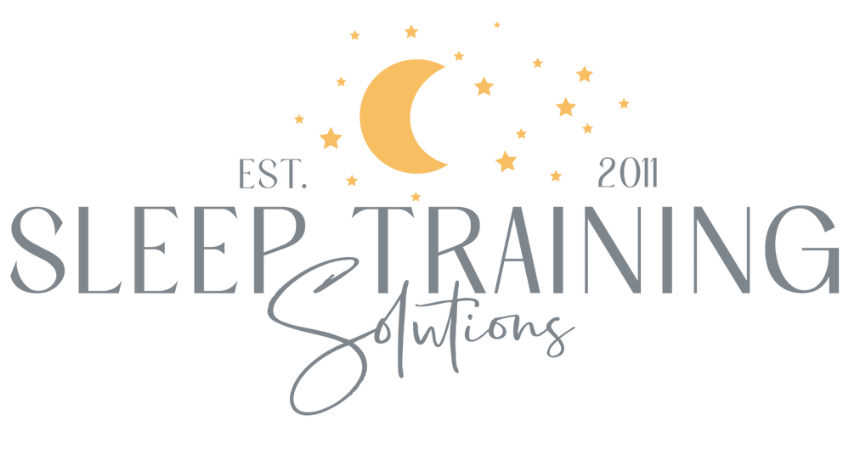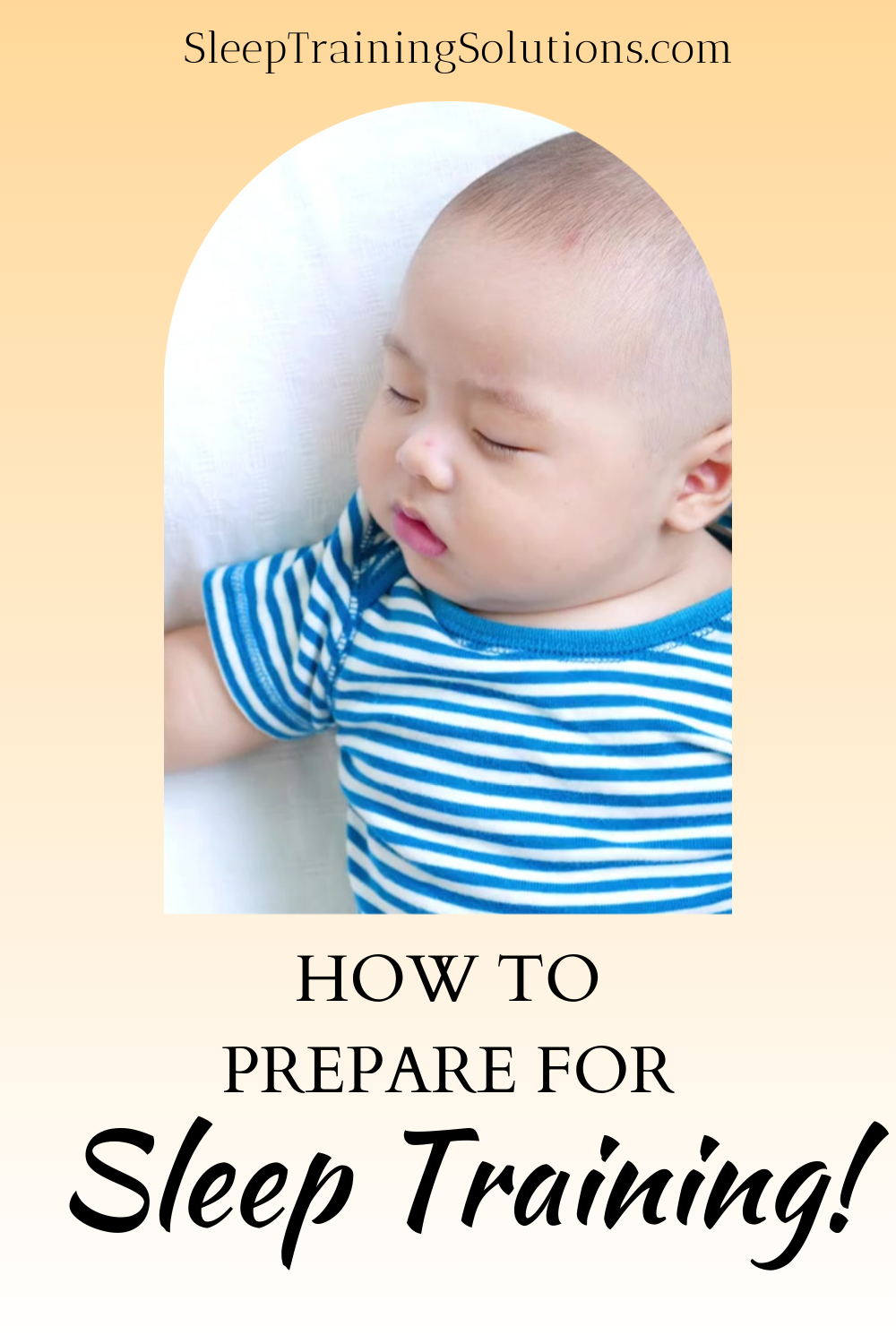How to prepare for sleep training
How to start preparing to start sleep training?
Your baby is waking up several times each night and you’re ready to start sleep training. Where do you start? Do you need to buy any products or gear that are advertised to promote sleep? Here’s a list of the things to do, buy, and NOT buy prior to sleep training!
What to do before starting sleep training
I have a free Sleep Training Readiness Checklist PDF that you can download. It covers everything you need to know about including:
when your baby is ready to start sleep training
the best time to focus on sleep training around maternity leave, work, vacations, etc.
how to get spouses (or nannies, grandparents, etc.) on board with the process
and the factors that predict sleep training success
What do you need to start sleep training?
The good news is you don’t need to run out to Target and purchase a bunch of stuff! Here what you need:
#1: A Plan
You need to know what you’re going to do every day for:
bedtime and naps to teach your baby how to go to sleep without you getting him drowsy (or to sleep)
middle-of-the-night wakeups - are you continuing to offer feeds or are you ready to night wean? How many night feeds? How will you get baby back to sleep independently for wakings when you don’t offer a feed?
early morning wakeups when your baby tries to start the day at 5am!
short naps when your baby wakes up after 30 minutes and is clearly still tired?
the bedtime and nap routines so your baby has that wind-down time before bed but doesn’t actually get drowsy
Your plan needs to address how you’ll remove any sleep props that your baby likes to use to fall asleep or get drowsy (like rocking, feeding, motion in the car/stroller/swing) and what awake times or schedule you’ll be using so your baby is being offered sleep in the right windows.
When you can answer each of these questions and commit to following your plan 100% - even at that 4am night waking when it’s sooooo easy to just throw in the towel and feed back to sleep - you’ll have a much better chance of success because consistency with sleep training makes the whole process go quicker!
Need help with this? I’d love to help!
#2: A Sleep sack
Once you have the plan, the first thing I’d advise getting (if you’re not already using one) is a few sleep sacks.
A sleep sack is a wearable blanket to keep your baby warm without having loose blankets in the crib (which are unsafe). They come in several fabric types - muslin, cotton, fleece, wool, etc - for use at different times of the year and are typically sized in 6-month increments (0-6 months, 6-12 months, etc.).
You’ll want to get at least two for each season in the correct size so that you have a spare if there’s a blowout diaper situation in the middle of the night.
Notice I didn’t say to use a swaddle. If your baby is old enough for sleep training (typically around 4 months), then she’s probably either starting to roll over or showing signs that it will be happening soon. Once your baby is at that point, using a swaddle is no longer safe (you don’t want your baby rolling over with hands in the swaddle and face against the mattress!)
If your baby is just coming out of the swaddle and you’d like a transition piece to use before going straight to the sleep sack, try this one.
#3 A White noise machine
I’m a huge fan of white noise machines like this one that play plain white noise continuously without looping. The whole purpose of white noise is to block out sounds from inside the house (squeaky floors, doorbell ringing, etc.) or outside the house (neighbor dog barking, thunder, sirens, early morning firetrucks, etc.), not lull your baby to sleep.
#4 Blackout shades
When I say blackout shades, I mean that the window coverings block out 100% of the light, even at 1pm on a sunny day.
Most blackout curtains that fall to the floor do a good job on the sides and at the bottom but let in light at the top. In this case, you could try to fill that space (that hopefully will be behind the edge of the curtain) with cardboard, aluminum foil or towels.
If you have pretty plantation shutters or some other blinds on the window, chances are you can see through the slats on sunny days and almost certainly around the perimeter of the shades. The best thing to do here is aluminum foil and painter’s tape on the glass (behind the shades), velcro shades, or paper shades.
Things you don’t need to get your baby to sleep
The advertising for products that will help your baby sleep is strong! Here is a list of items many of my clients spent money on, they didn’t work, and ended up calling me to get a plan to STOP using them :)
#1: Padded sleepsuits
You don’t need those padded sleepwear suits that make it impossible for your baby to roll over.
I see why parents might want to use them (because baby keeps rolling over and getting stuck and/or frustrated) but it’s far better to work on teaching your baby how to roll front to back and back to front more easily during awake times. By mastering this new skill outside the crib, it’ll make sleep time so much easier!
This post has tips to help develop that skill of rolling back and forth!
#2: Weighted sleep sacks
According to the American Academy of Pediatrics (AAP), these are unregulated and not safe for use by babies.
#3: Sound machine with lullabies
As mentioned above, you just want a sound machine with white noise to block out sounds from inside or outside the house so your baby isn’t startled awake. Using a noise machine with lullabies suggests you’re trying to lull baby to drowsy, which doesn’t help the sleep training process where you are teaching your baby to fall asleep independently from awake.
#4: Crib toys
Skip the aquarium with the lights and sounds and the mobile. Those are meant to entertain your child while in the crib, but we want to teach your baby that the crib is for sleeping - not playing!
This will make it so much easier because when you lay your baby down, there’s no confusion whether it’s sleep time or playtime. Also, try to find a different safe place to lay your baby down if you need to grab a package at the front door or change the laundry…again, you don’t want your baby to wonder if this is a 5-minute break or if she’s supposed to sleep!
#5: Anything that projects lights on the ceiling
There are some cool projector toys that project stars, the cow jumping over the moon, animals, etc. Some parents buy them so the room’s not so dark (in which case a low-blue light night light is a better option) and others buy to entertain their child as they’re falling asleep.
As mentioned in #4, you don’t want your child to be entertained once they’re in the crib. It’s too distracting and isn’t in line with the thought that being in bed means it’s time to sleep!
#5 A Rock n Play
These were recalled in 2019 because they were unsafe, but they are continuing to cause infant deaths because parents are still using them. If you received a hand-me-down Rock n Play from a well-meaning friend, please don’t use it.
#6 A SNOO
I can see why a newborn parent might want to rent a SNOO for a couple of months during that newborn period, but parents call me when their baby is 4 months and they’re still using it - and not sure how to break the habit! Save your money - they’re expensive!! - and rent one for a short time instead if that’s the route you decide to go.
If you’re reading this as a newborn parent (or expecting parent) and you’re looking for a way to help your newborn not get so dependent on a single sleep prop like the SNOO, check out my Newborn Foundations program.
Save your money on the sleep-promoting items listed above because they either aren’t safe for sleep OR are just putting a bandaid on the problem. Even if you do try them, you’ll likely need to give your baby a nudge in the sleep department when you stop using them…and then the process will be even harder because your baby will be older and smarter!
If you’re currently using one of these items and realizing your baby isn’t making any progress in the sleep department, I’m here to help!
What to have in place to start to sleep train baby
Related Posts:
This post is for informational purposes only and may not be the best fit for you, your child and/or your personal situation. It shall not be construed as medical advice. The information and education provided here is not intended or implied to supplement or replace professional medical treatment, advice, and/or diagnosis. Always check with your child’s physician or medical professional before trying or implementing any information read here.
Please note that some of this site’s links are affiliate links, and Sleep Training Solutions is a participant in the Amazon Services LLC Associates Program, an affiliate advertising program designed to provide a means for sites to earn advertising fees by advertising and linking to Amazon.com and affiliated websites. I will earn a small commission, at no additional cost to you, if you purchase them.





